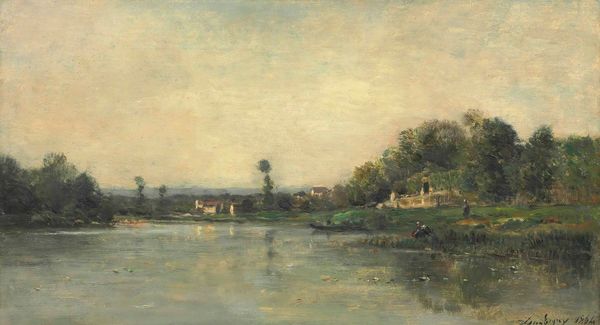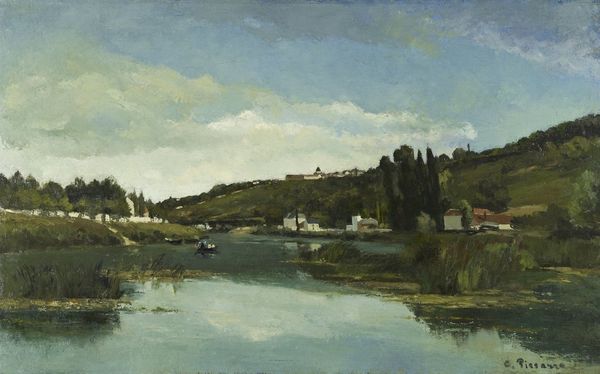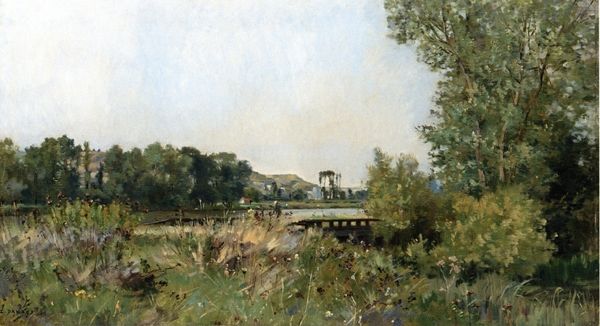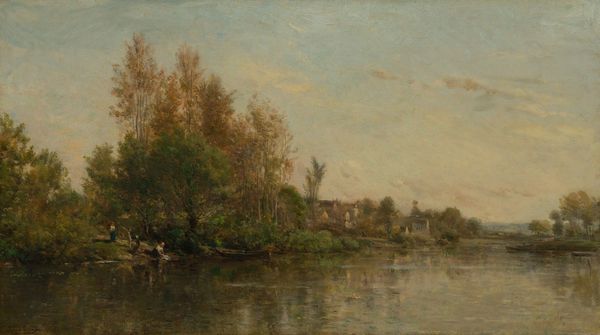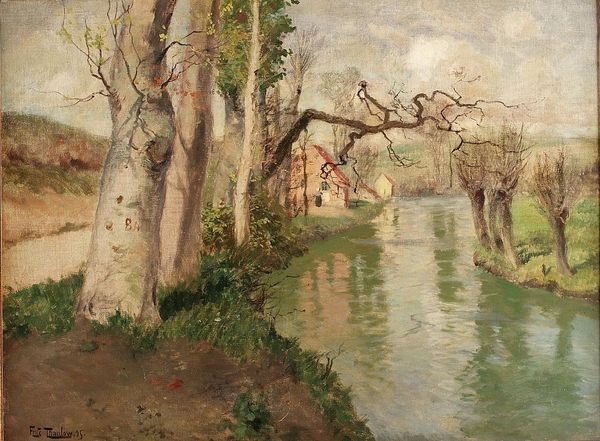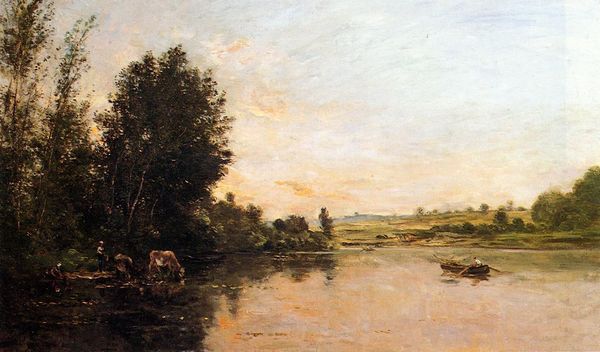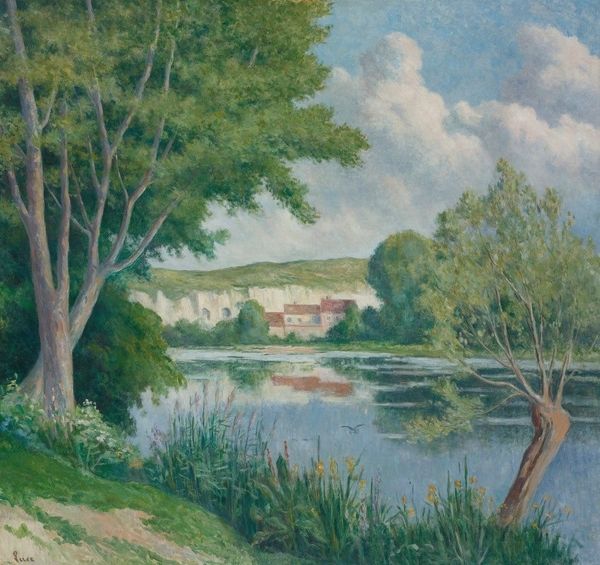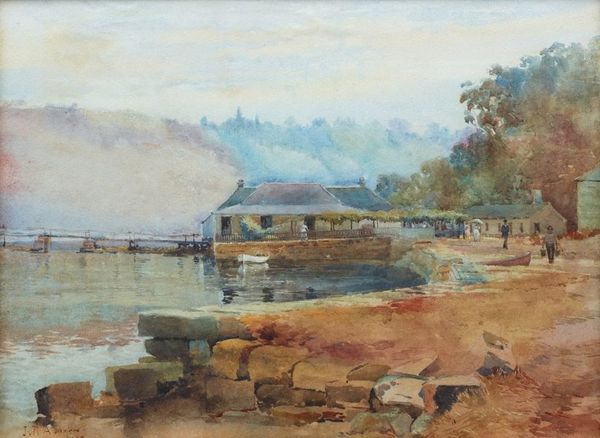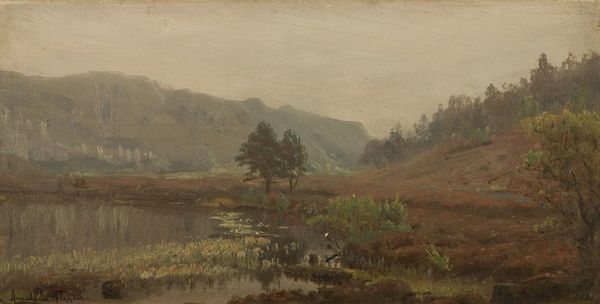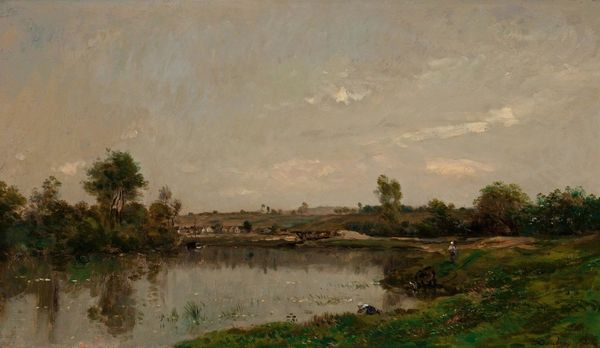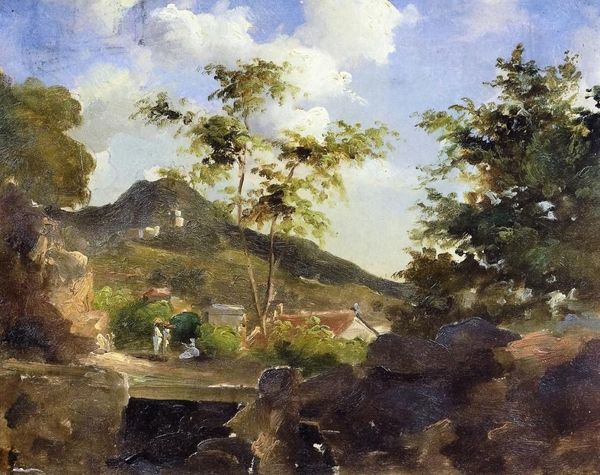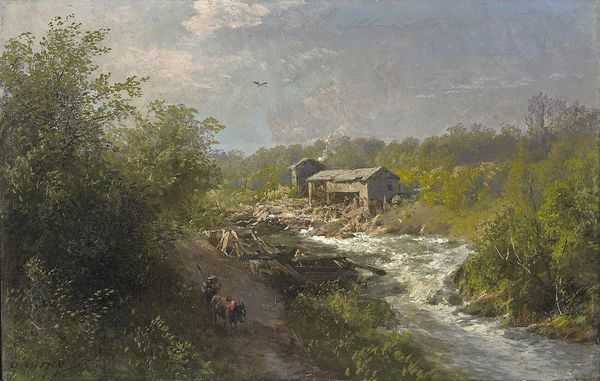
plein-air, oil-paint
#
impressionism
#
plein-air
#
oil-paint
#
landscape
#
charcoal drawing
#
impressionist landscape
#
oil painting
#
water
Dimensions: 30 x 47 cm
Copyright: Public domain
Curator: We’re looking now at Pierre-Jacques Pelletier’s "Bords de l'Oise," an oil painting clearly executed en plein-air. The directness of its impressionistic strokes seems intended to capture an immediate atmospheric response to this riverside scene. Editor: It feels like a fleeting moment, a pause in the day, like a breath. There's a certain tranquility, even in the way the brushstrokes create a slightly hazy effect. What strikes you about Pelletier’s method here? Curator: I find it fascinating how Pelletier embraces the materiality of oil paint to depict the nuances of light and shadow. Observe the visible brushwork, the thick impasto in areas suggesting that materiality wasn't concealed but emphasized to capture the raw and tangible essence of the scene. I also note an almost sketch-like quality in places. Editor: Yes, and it’s the looseness and light handling of the materials, really, that draws me in. There's a beautiful interplay between the solidity of the buildings on the right and the fluidity of the water—almost as if they're reflections, not just in the water but of each other. Is this artist known for working primarily with this medium? Curator: His work is notable for capturing scenes en plein air, that is certain, using the qualities of oil and other mediums such as charcoal to articulate fleeting qualities of the impressionistic landscape. Editor: I’m curious about how a contemporary viewer would have seen something like this. Was landscape painting, done in this way, already quite conventional? Curator: It certainly wasn't the academic ideal, no. Capturing the changing effects of light and atmosphere had gained prominence, influenced by the Barbizon School and then, later, the Impressionists. Editor: Looking at it now, it feels timeless, though. But maybe that’s because so much between then and now was built upon the foundations that works such as this laid out. Curator: Precisely. Pelletier used what was readily available, and the results speak volumes about the social landscape within which Impressionism operated. He gave us insight into the industrial and the organic together. Editor: There’s a softness here—it invites you to contemplate your place within this world, as a participant but also a fleeting observer. Thanks for that perspective. Curator: My pleasure. And hopefully we’ve offered our listeners food for thought about how even landscapes can reveal so much about artistic and societal values of their day.
Comments
No comments
Be the first to comment and join the conversation on the ultimate creative platform.
